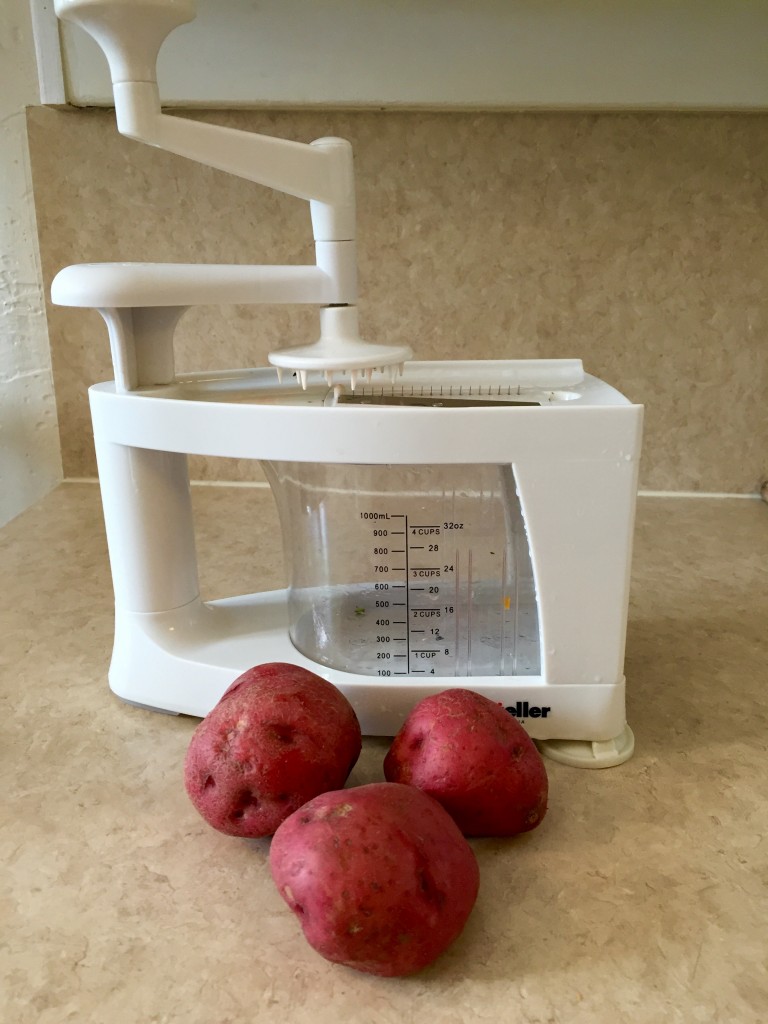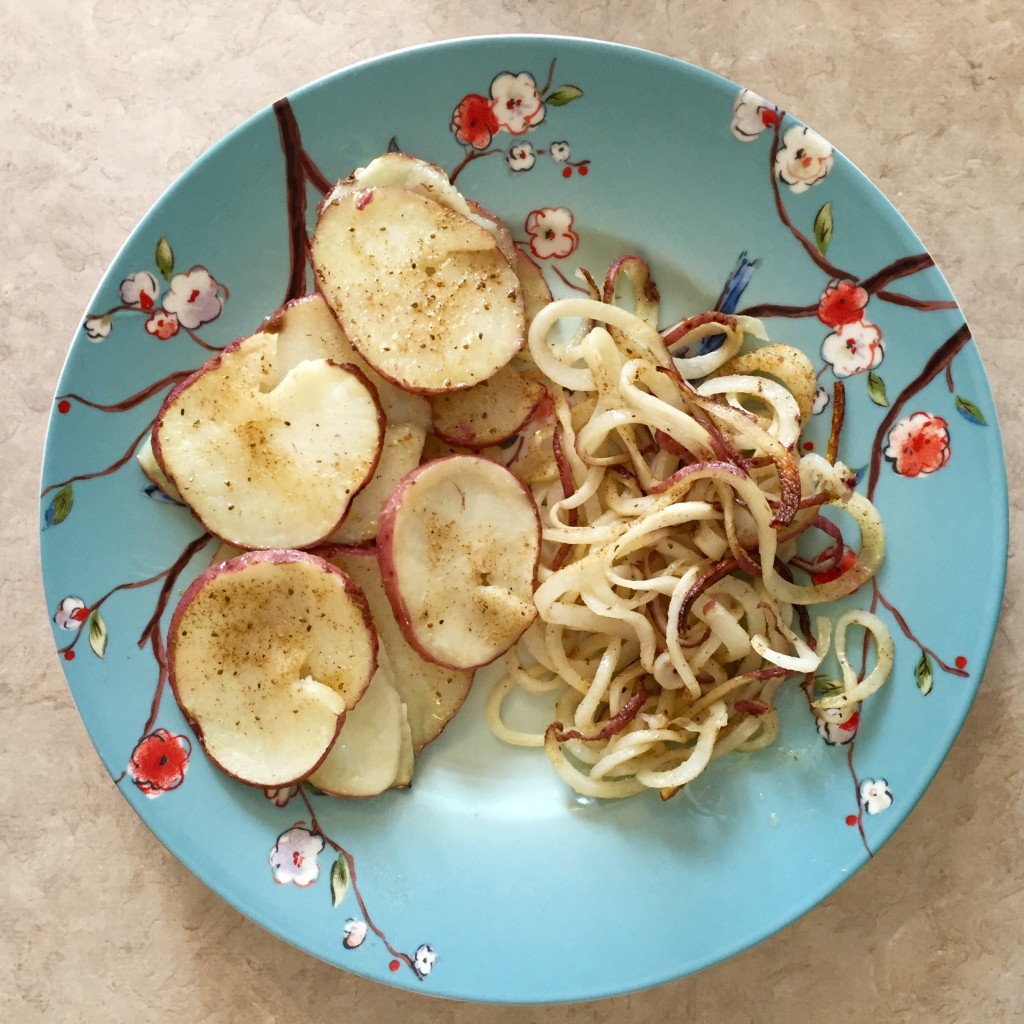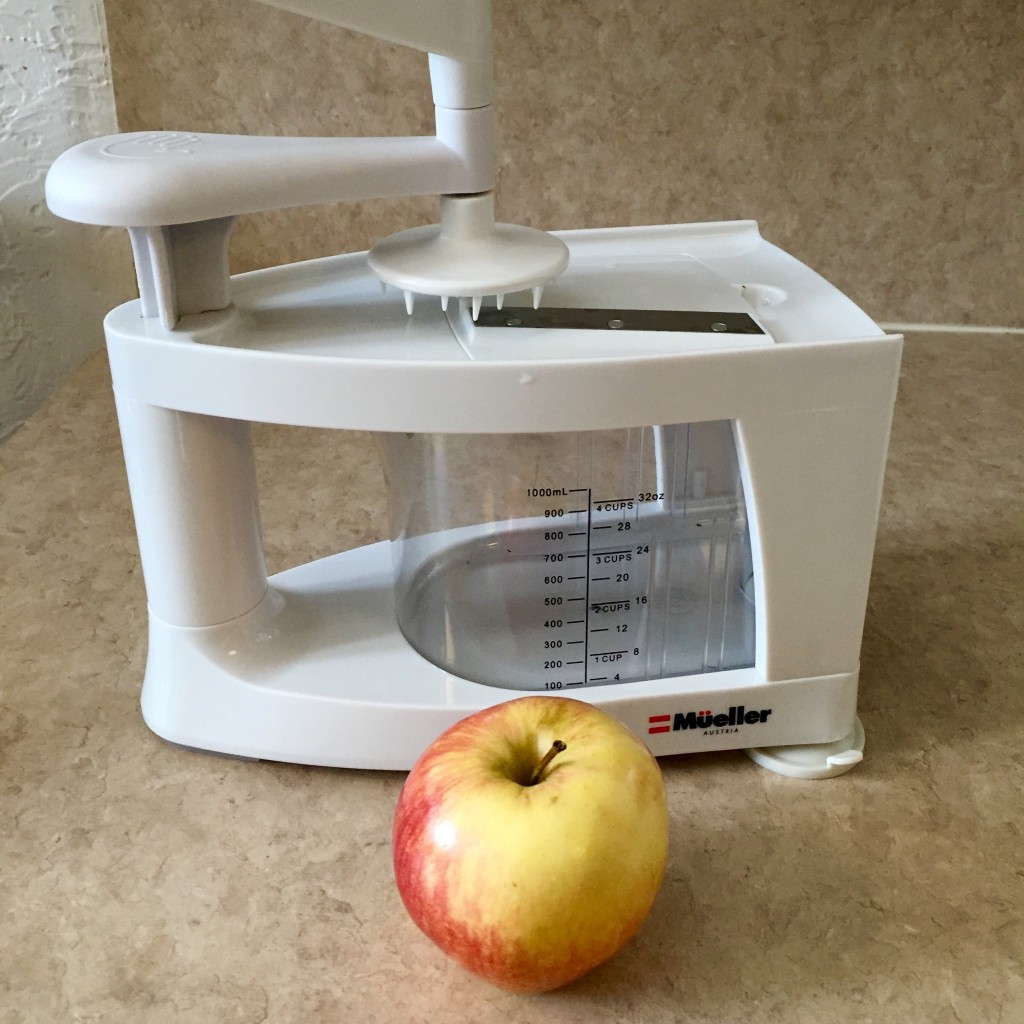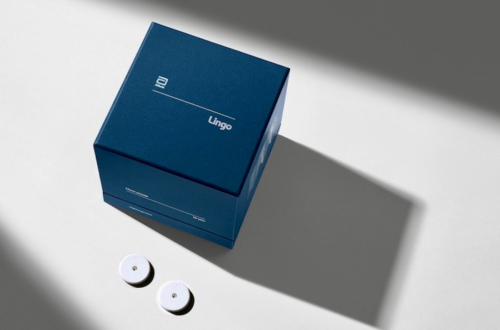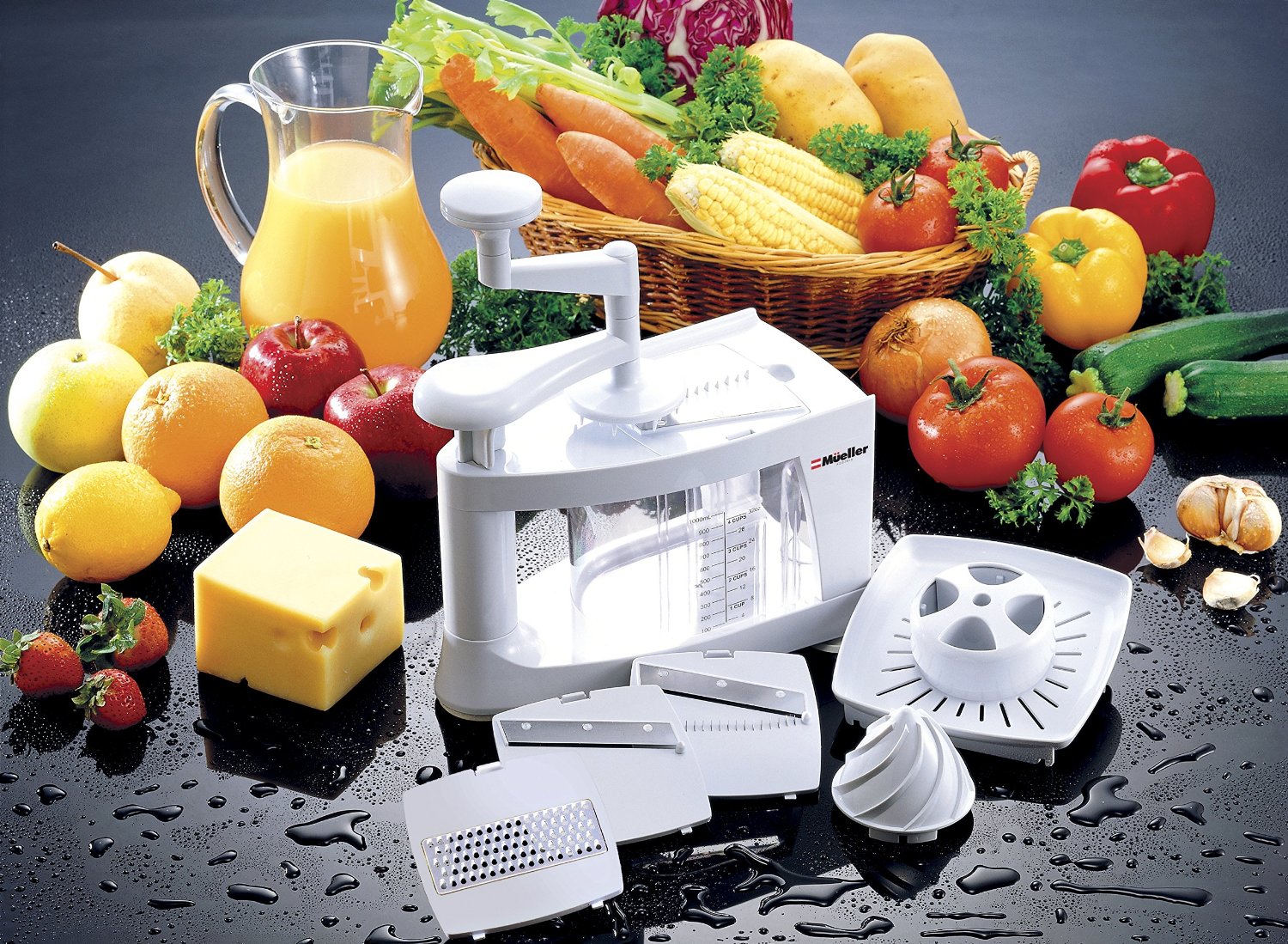
Product Review: Mueller Spiralizer
Since following some new low-carb/diabetic-friendly feeds on social media, I’ve seen a lot of vegetable pastas. Not just wheat noodles made from spinach or tomatoes, but actual veggies cut into strands; the most popular being zucchini noodles, or zoodles. Interested in taste testing, I searched gourmet food markets without luck. Turns out, you can make zoodles at home with a kitchen tool called a spiralizer.
To fulfill my quest to try zoodles, my mother-in-law gifted me a Mueller Spiralizer for christmas. This Austrian Model includes 4 different blades for 8 unique cuts, as well as an attachment for juicing.
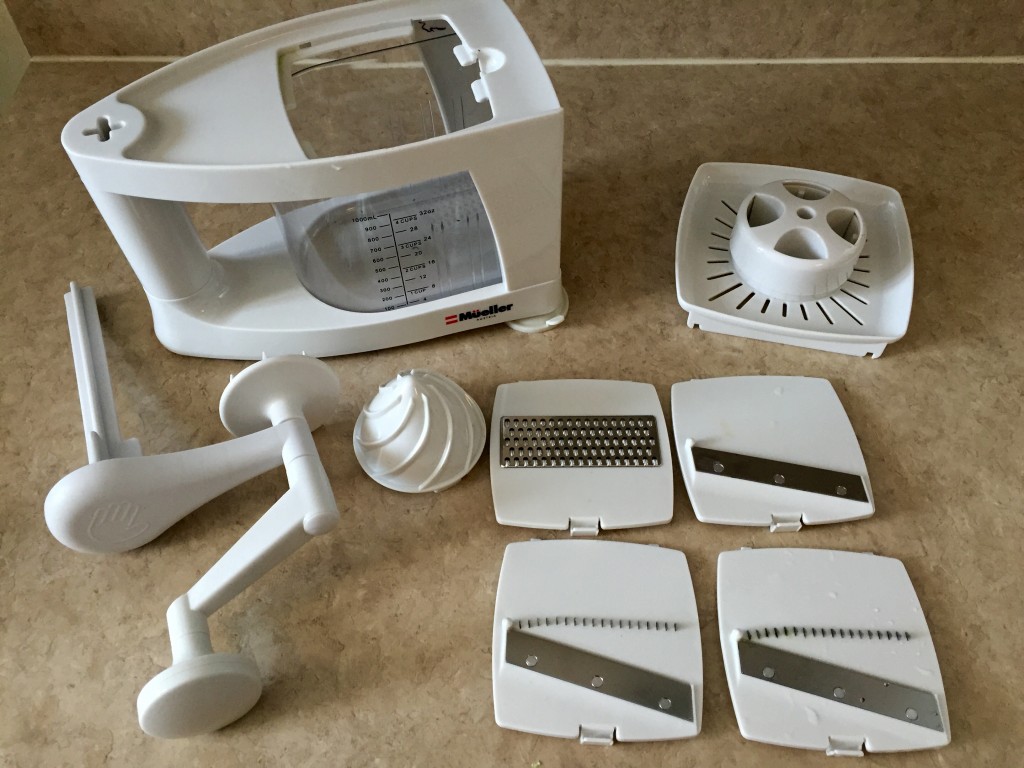 The main unit has small plastic container to catch the noodles, that can also be used for measuring. The piece to the left is a hand crank for spiraling and the square unit on the right is a finger protector.
The main unit has small plastic container to catch the noodles, that can also be used for measuring. The piece to the left is a hand crank for spiraling and the square unit on the right is a finger protector.
The top left blade is for grating, the top right is to be used as mandolin for slicing, and two bottom blades are for Julienne-thick and Julienne-regular 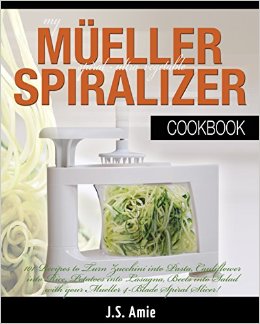 (although, they look almost exactly the same to me!). I think one is supposed to be larger for things like onion rings, etc. The twisty cone piece is the juicer. I was also gifted theMueller Spiralizer Cookbook! The first few chapters explain how to use the spiralizer and recommendations on how to cut different foods depending on size and firmness. The rest of the book features fantastic veggie-focused recipes!
(although, they look almost exactly the same to me!). I think one is supposed to be larger for things like onion rings, etc. The twisty cone piece is the juicer. I was also gifted theMueller Spiralizer Cookbook! The first few chapters explain how to use the spiralizer and recommendations on how to cut different foods depending on size and firmness. The rest of the book features fantastic veggie-focused recipes!
Zucchini Noddles aka “Zoodles”
Of course, the first dish I wanted to try were zoodles! These two small zucchini’s made about 1.5 cups, which was the perfect serving size. I left the zoodles raw and unpeeled (for extra fiber), but they can be peeled and and heated depending on the dish. You can nuke them in the microwave for ~30 seconds or blanch them in boiling water before serving.
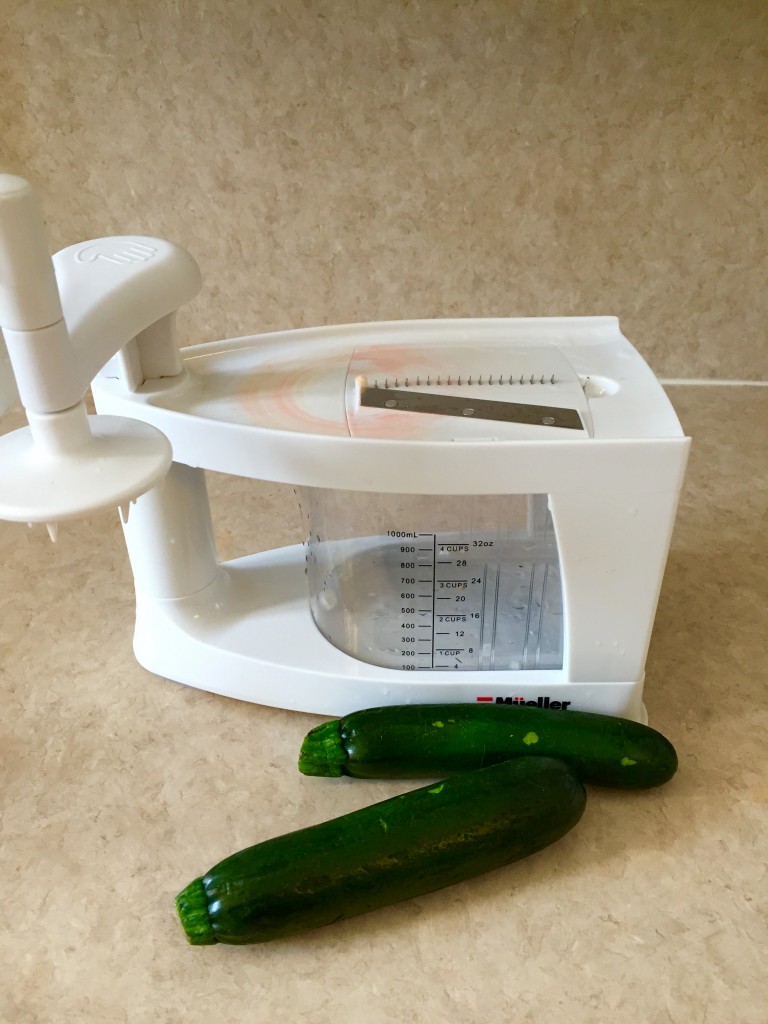
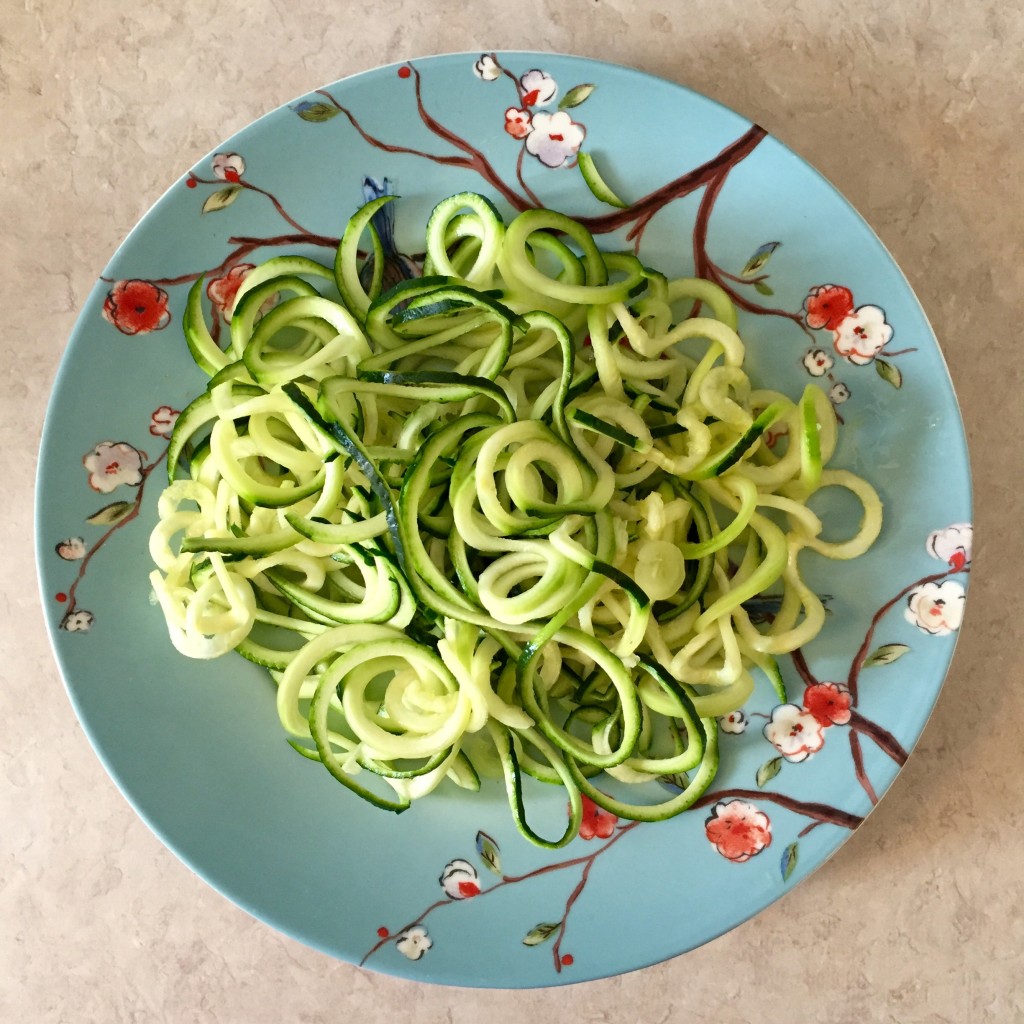
The next step is to coat the zoodles with your favorite sauce. Consider a quick store-bought marinara, fresh pesto or maybe a homemade Cheesy Alfredo for a cold winter’s night.
Sweet Potato Pasta
For a little more starch and vitamin A, I spiralized a sweet potato to make sweet potato pasta. 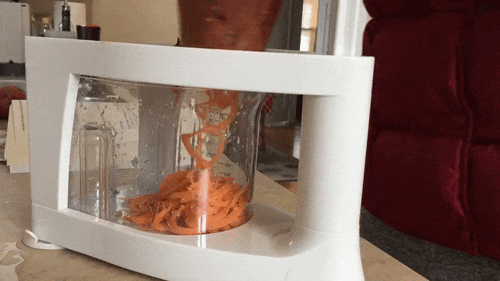 Because raw potatoes tend to absorb bacteria from soil and water (listeria , E. coli, and salmonella) plan to cook the noodles a bit before serving. I boiled my sweet potato noodles in a half-inch of water for about 8 minutes. I prefer them a bit al dente.
Because raw potatoes tend to absorb bacteria from soil and water (listeria , E. coli, and salmonella) plan to cook the noodles a bit before serving. I boiled my sweet potato noodles in a half-inch of water for about 8 minutes. I prefer them a bit al dente.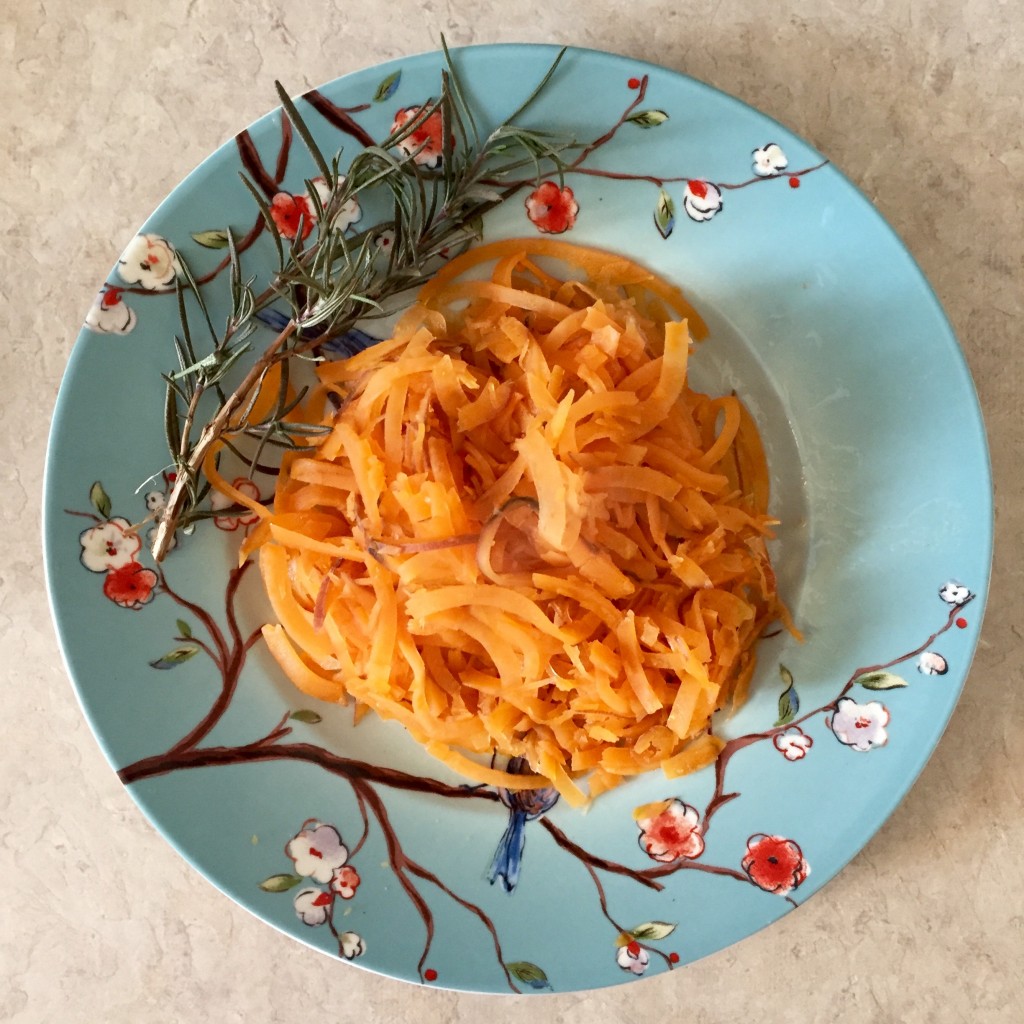
The recipe book had some great ideas for spirialized sweet potatoes including; Sweet Potato Pudding, Sweet Potato Latkes, and a dish that used maple syrup and bacon, oh my! I ended up mixing mine with the zucchini noodles and sautéing them in some fresh pesto for dinner.
French Fries
What good is a kitchen gadget if you can’t make french fries!? That is a minimum requirement to earn shelf-space in my pantry! I had a few forgotten potatoes at the bottom of my refrigerator, which made great baked fries.
The fries on the left were spiralized with the straight blade, while those on the right were made with the thick Julianne blade. I coated both with a little extra virgin olive oil (EVOO), sprinkled with Old Bay (shout-out to my mid-atlantic foodies!!), and baked them at 425F for ~ 10 minutes. Very tasty!
Apple Crisp
Lastly, I tried spiralizing an apple. While I didn’t bother to core or peel the apple, the spiralizer did a pretty good job of pulling out the seeds. I covered the sliced apple with cinnamon, sugar, and oats to make an apple crisp that I baked at 425F for about 35 minutes.
Pros v Cons
Like most kitchen appliances, there are some pros and cons to this particular item.
Pros
- The vertical design allows gravity to hold and pull the vegetable so that there is no awkward sideways pressure (like some spirializers).
- The four blades can do much more than spiralize, including slice and grate.
- This particular spiralizer is very light, small, and easy to store in my tiny 1920’s bungalow kitchen.
Cons
- It can be challenging to clean around all the sharp tiny pieces without the right tools. I recommend buying a bottle brush cleaner or even a extra tooth brush for the blades.
- The plastic of the base unit seems to stain easily with the natural fruit/vegetables colors. What doesn’t wipe away initially may need to be soaked for a while.
All in all, I love this spirializer and plan to use it to incorporate more veggies in my meal plan throughout the week. Interested in giving the Mueller Spiralizer a try? You can purchase it online here!


